How to build a cheap DIY underground bunker to protect you from nuclear fallout, in 6 steps

Fallout shelters can cost millions of dollars. But this DIY underground bunker costs about $1,000.
You wouldn't want to live in this makeshift underground bunker forever.
In a pinch, this DIY fallout shelter would be better than an above-ground building, an expert said.
In the event of nuclear war, the ultra-rich can hide away in their luxury bunkers that cost anywhere from $35,000 to $14 million. But what about the rest of us?
Turns out, if a nuclear attack is imminent, you can build your own DIY fallout shelter for relatively cheap.
You would just need a couple of days' time, some equipment, and ideally a bunker-building buddy.
Equipment you'll need for a DIY fallout shelter

One of the simplest shelters to protect yourself from radioactive fallout is a pole-covered trench shelter, the book "Nuclear War Survival Skills" advises. The book has multiple DIY fallout shelter options in case you want something a little more challenging.
This shelter, in particular, uses soil to absorb harmful radiation from fallout.
Originally published in 1979 and based primarily on research conducted at Oak Ridge National Laboratory, Nuclear Survival Skills has extensive information on building quick and inexpensive fallout shelters.

The book says you'll need the following to build this basic fallout shelter:
About 20 to 30 cut logs or wooden poles, at least seven feet in length and four to six inches in diameter
Some waterproof material, like plastic sheeting, canvas, or tarps
A shovel or backhoe for all that digging you'll be doing
Working by hand, two people could build this shelter in a backyard or wooded area in two days or less, "Nuclear War Survival Skills" says.
But anyone in good enough shape could probably complete the project on their own in a day by renting a backhoe and purchasing wooden poles from a lumber yard — it would likely cost under $1,000 depending on how many tools and equipment you need to purchase or rent.
How to build a DIY fallout shelter for cheap in 6 steps
First, scout out a location for your fallout shelter. Ideally, it should be on flat ground and at least 50 feet from other buildings or trees in case of fire, "Nuclear War Survival Skills" says.
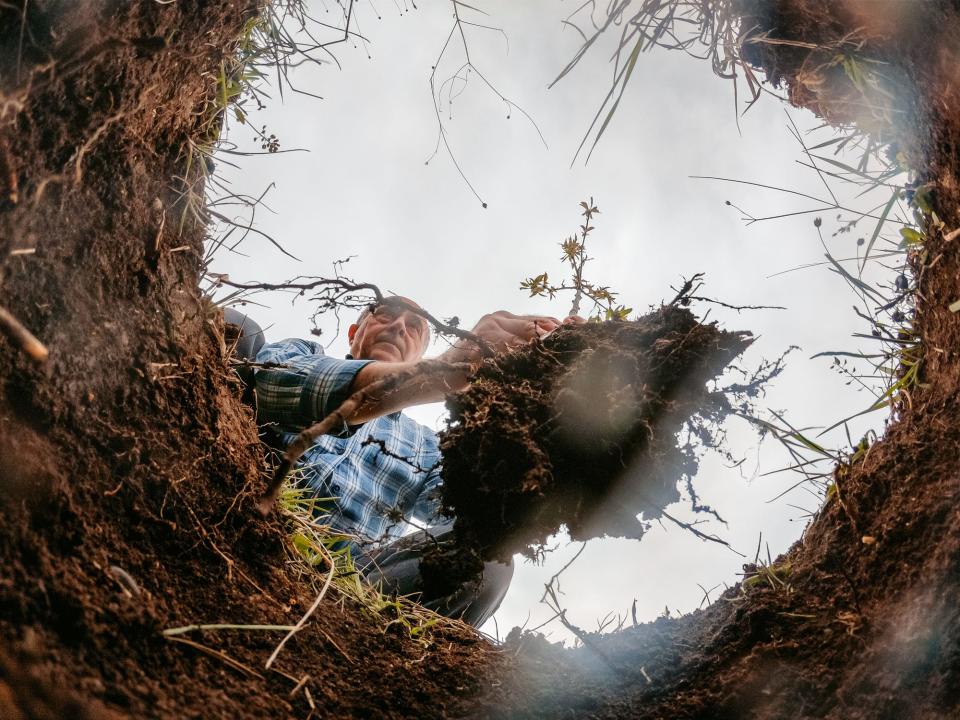
Step 1: Dig a trench three feet wide and five feet deep. As for length, "Nuclear War Survival Skills" calls for 11 feet for four people, and another three feet for each additional person. A good shovel for this step should cost between $25-$50.
Step 2: Next, dig a five-foot-long entrance with steps or a slope down into the main area. At the other end of the trench, dig a five-foot-long ventilation trench to help circulate air. Dig this trench just under the ground's surface with an opening to the surface at the end of it. It should be about two feet wide by three and a half feet deep — it's basically a crawl space and can double as an emergency exit for smaller individuals.
Step 3: When completed, place waterproof material over each end of the shelter to form an overhead canopy — this should keep your shelter dry as well as catch any dropping fallout. A basic 3-by-11 foot waterproof tarp should run you between $20-$40.
Step 4: Once you've dug your trench, lay your wooden poles over top of it. The poles should over-hang the edges by at least a foot in order to help support the soil on top. If you purchase these poles, instead of chopping them down yourself, you're looking at an average cost of about $20 per log, or $400 for 20 logs.
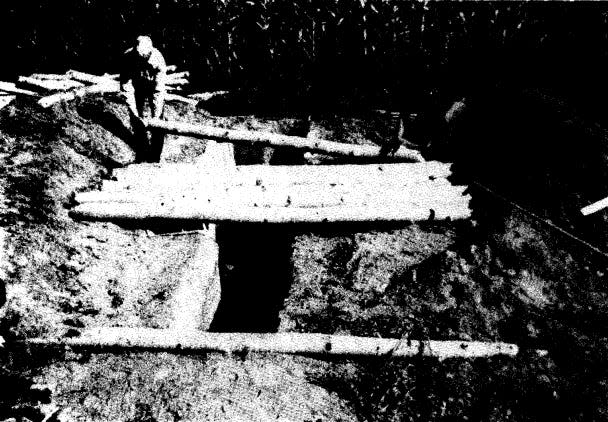
Step 5: After that, fill any open space between the logs with cloth, leaves, or other material on hand to prevent dirt from falling through the cracks between them.
Step 6: Next, using the soil you've already dug up, make a mound 18 inches high at its center atop the logs or poles and cover the soil with plastic sheeting or other waterproof material (cost of about $20-$40). Add another 18 inches of soil on top of that.
You now have a basic fallout shelter that you built for a fraction of the cost compared to what you might pay someone else to build a bunker for you!
How this DIY fallout shelter would protect you
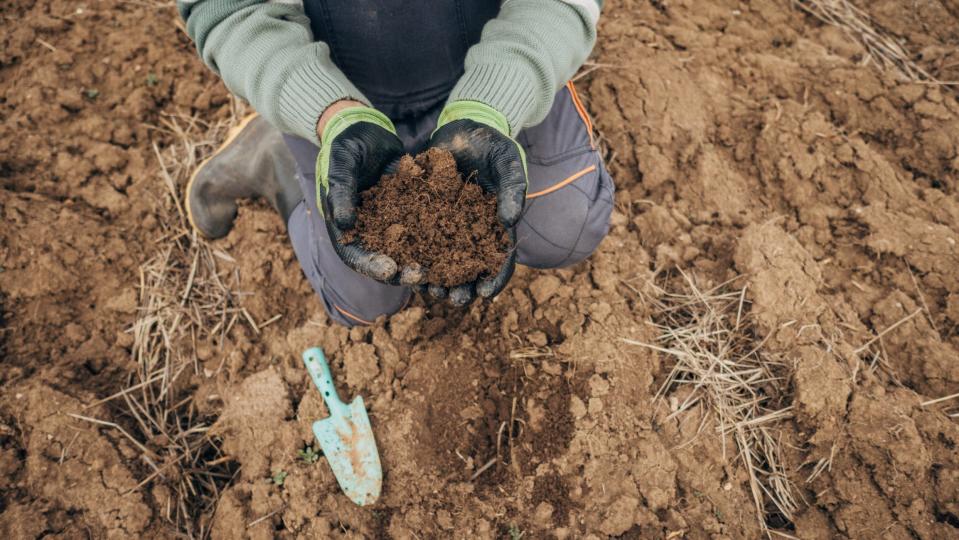
High energy radiation like gamma rays and neutrons require thick layers of material — like concrete, lead, or even water — to absorb them. So how much protection from radioactivity does this soil-covered shelter offer?
Zaijing Sun, a nuclear physicist at the University of Nevada, Las Vegas, said that soil, especially if it contains a lot of heavier elements such as iron, will attenuate — or absorb — radiation quickly.
"In most cases, 36 inches of soil is enough — it may reduce the gamma radiation dose by more than 95%," Sun said.
What should you stock it with?
To avoid air in the shelter from getting too hot you'll want to build what's called a Kearny Air Pump to ensure proper ventilation. You can hang hammocks from the logs overhead to make the space feel less cramped.

Be sure to have plenty of water on hand — you'll want one gallon of water per person per day. You can use bottled water or other airtight containers to store it. Just don't collect your water from rain or anything else exposed to the elements, as it almost certainly will be contaminated with poisonous radioactive fallout.
You can survive for weeks without food, so for a short term stay you could probably go without it, but if you want to stock up, some long-lasting foods include canned goods, peanut butter, dehydrated meat, and MREs.
For your bathroom needs, the simplest method is to use a five gallon bucket, lined with a plastic bag and kept tightly lidded when not in use. You can use absorbent material like kitty litter or sawdust to cover your waste.
Other items that could come in handy in your underground shelter include: battery-powered lamps and flashlights, a radio, and a first aid kit.
How long would you need to stay underground?
The length of time you should spend in the fallout shelter "depends on many factors, like the bomb size, denotation location, and weather conditions," Sun said.
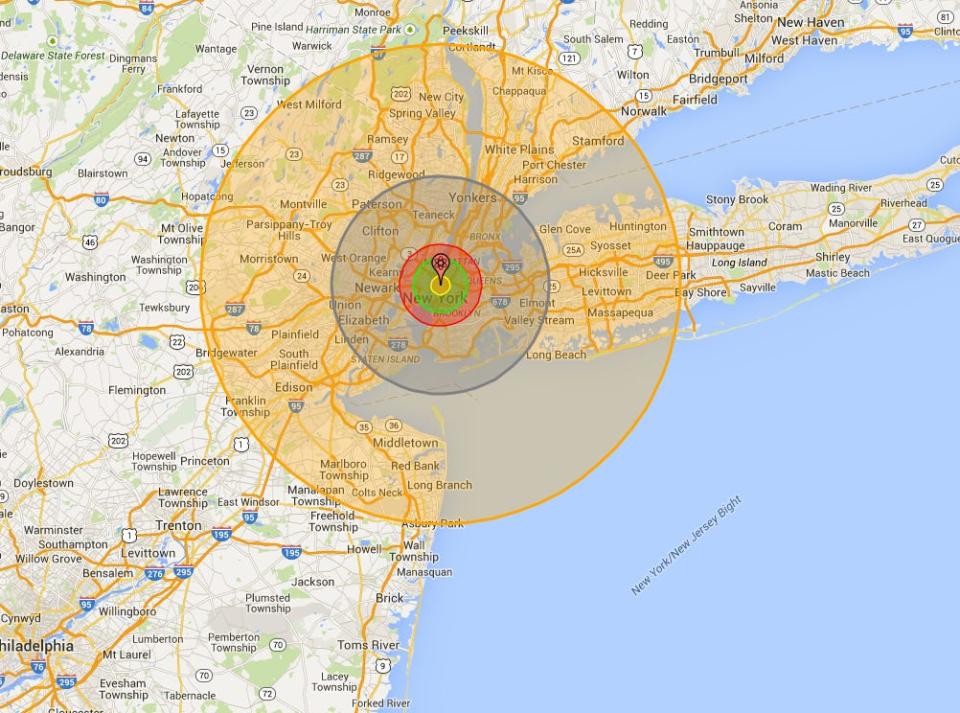
"Generally, nuclear fallout will take hours and days to settle," Sun continued. "The most dangerous period is typically within one to three days after the explosion when radiation levels are very high. After that, radiation levels go down exponentially."
One simulation of a nuclear bomb estimated that within 48 hours, the "dangerous fallout zone" wouldn't extend much more than 50 miles from the detonation site. So, depending on how close you are to the explosion, your amount of time underground might only have to last a few days.
What to do if you aren't near a fallout shelter
Even if you can't build a fallout shelter in time, you would still have options for protection after a nuclear attack.
You'd want to "try to get away as far as possible, wash your skin to avoid any dust, and use masks for airborne particles," Sun said.
Then you'd want to find shelter in a place with the thickest material possible between yourself and the outside world: "Basements and concrete buildings are good choices. If an underground option is unavailable, you may try to stay underneath the interior stairs," Sun said.
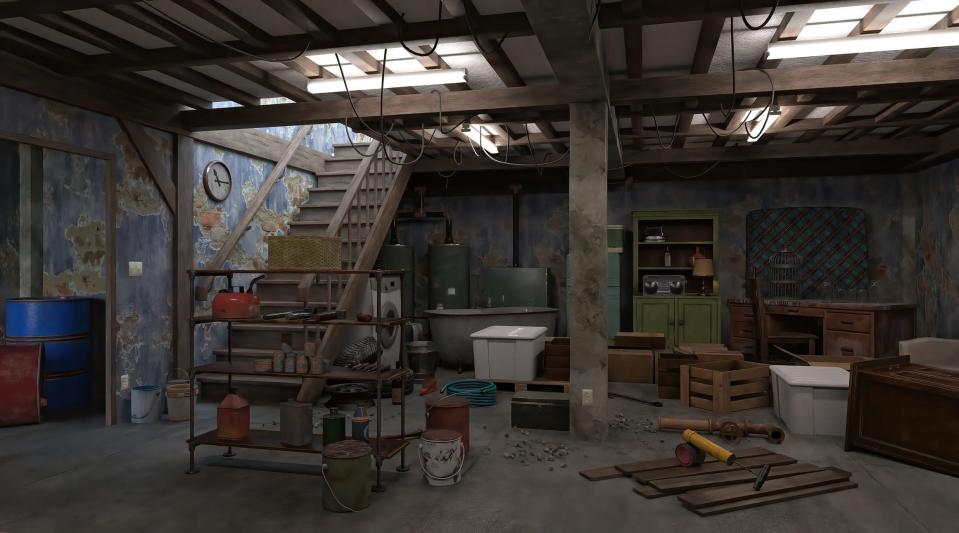
But, Sun said, the homemade fallout shelter offers better protection than a basement or concrete building because the soil-covered fallout shelter has the advantage of heavy shielding on top and "the strongest radiation may come from above in a nuclear explosion, especially the initial explosion that might blow away the building structure above you."
"A DIY shelter is more effective than most above-ground structures for sure and is about equal in protection as an underground brick or concrete structure if the structure has brick or concrete covers," Sun said.
Read the original article on Business Insider

 Yahoo Sport
Yahoo Sport 





































